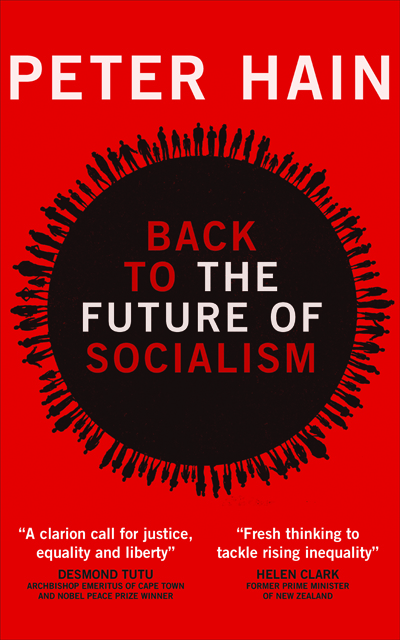Book contents
- Frontmatter
- Contents
- Frontmatter
- Preface
- Introduction: Back to the future of socialism
- 1 The Crosland agenda
- 2 New Labour, Crosland and the crisis
- 3 Finance and the new capitalism
- 4 Growth not cuts
- 5 Growth by active government
- 6 Fraternity, cooperation, trade unionism
- 7 But what sort of socialist state?
- 8 A new internationalism
- 9 Britain in Europe
- 10 Refounding Labour
- 11 Faster, sustainable growth
- 12 A fairer, more equal society
- 13 A future for Labour
- Notes
- Index
2 - New Labour, Crosland and the crisis
Published online by Cambridge University Press: 15 April 2023
- Frontmatter
- Contents
- Frontmatter
- Preface
- Introduction: Back to the future of socialism
- 1 The Crosland agenda
- 2 New Labour, Crosland and the crisis
- 3 Finance and the new capitalism
- 4 Growth not cuts
- 5 Growth by active government
- 6 Fraternity, cooperation, trade unionism
- 7 But what sort of socialist state?
- 8 A new internationalism
- 9 Britain in Europe
- 10 Refounding Labour
- 11 Faster, sustainable growth
- 12 A fairer, more equal society
- 13 A future for Labour
- Notes
- Index
Summary
Despite huge misgivings about his suitability for the job, virtually all of Gordon Brown’s parliamentary colleagues, myself included, nominated him to succeed Tony Blair as Labour Party leader and Prime Minister in June 2007 because his position was unassailable – largely due to the evident success of New Labour’s economic policies under his Chancellorship since 1997.
Britain appeared to have turned into a ‘Goldilocks economy’, one which had broken free from the cycle of boom and bust and which grew inexorably at a steady pace, with low inflation, low interest rates and record employment levels. One which could afford to cut poverty, expand the welfare state and improve living standards. One, in fact, rather like that envisaged by Tony Crosland.
Yet Labour had lost nearly 1,000 council seats in the English and Scottish local elections of 2006–07 and four seats in the 2007 Welsh Assembly elections. If the UK economy was doing so well why was it bearing such poor political fruit? Presumably past Labour supporters were sharing in the gains from growth, so why were they giving up on the party in such numbers? It was a quandary that the elections for a new Labour leadership team never adequately addressed as the party basked in the transition from Blair to Brown.
In his final budget as Chancellor in March 2007 Gordon Brown planned to meet his ‘golden rule’ – to borrow only to invest over the economic cycle – by slowing the annual rise in public spending over the next three years to just 2 per cent. This was half that achieved since April 1999 when New Labour broke free from the Tory spending ceilings that they had promised to abide by during their first two years in office, but still higher than that delivered by the Tories between 1979 and 1997.
Ten years of steady economic growth had pushed total UK employment to record heights, with 3 million net extra jobs, despite the number of manufacturing jobs falling from 4.5 million in 1997 to only 3 million in 2007. Consumer spending had been growing strongly for years, albeit against a backdrop of increasing household debt. House prices had boomed, making many lucky homeowners feel better off.
- Type
- Chapter
- Information
- Back to the Future of Socialism , pp. 19 - 38Publisher: Bristol University PressPrint publication year: 2015



